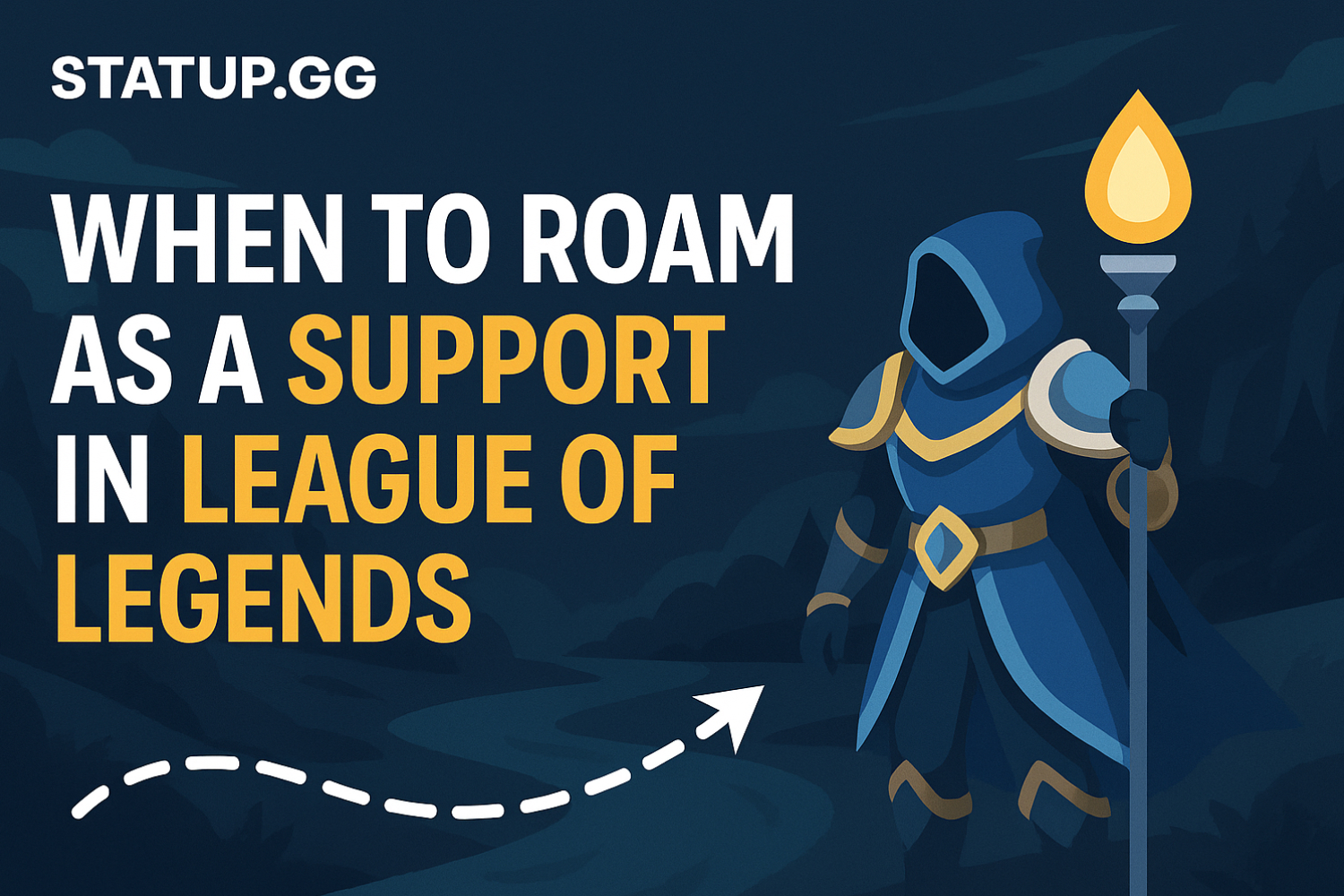When to Roam as a Support in League of Legends


This guide was created by STATUP.GG, an AI-powered voice coach designed to help you play smarter and more confidently.
Many players copy the roaming they see from high-Elo players or professional matches. However, roaming is not something you do blindly. It follows the concept of a turn, and there are specific conditions and timings that make roaming effective.
In this guide, we will explain the ideal scenarios where a support can leave the bottom lane to roam, along with the key factors that must be checked based on the actual flow of the game.
This is the most basic setup that allows roaming. The sequence usually goes like this:
Because you pushed the wave before recalling, the next wave naturally pulls back toward your side. This means the ADC will farm near the tower without much chance of trading, and during this window the support gains freedom to move.
Steps 1 through 4 take roughly 40 seconds. This window is when the support can roam and look for extra advantages.
A support does not always need to dive on an enemy laner and secure a kill for roaming to be successful. The following are valuable roaming options:
These movements contribute to overall team vision control and objective priority, creating long-term advantages across the entire game.
In general, gaining lane priority gives you more opportunities and longer windows to roam, while losing lane priority shortens them. Even if the situation looks favorable, roaming is not always the correct answer. You must confirm the following three points:
If these conditions are not met, roaming might succeed but your ADC could die to a dive and you might lose turret plates, leading to a long-term disadvantage.
For this reason, supports should always check the minimap before roaming. If the conditions are not right, shift to a more defensive position and adapt quickly.
Found this helpful? Try STATUP.GG for real-time voice coaching in-game.
Questions or feedback? Email us anytime at contact@gamerrepublic.gg